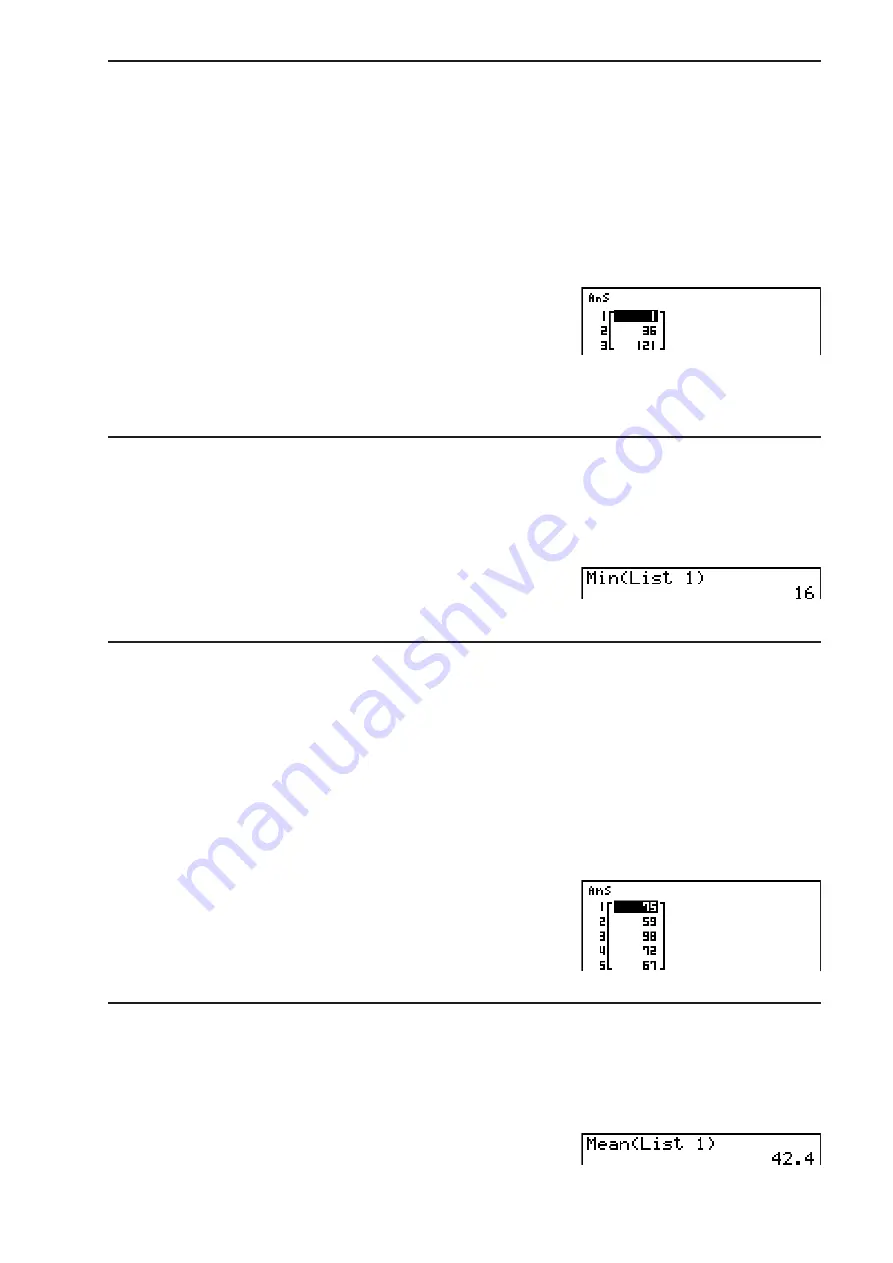
3-7
S
To generate a sequence of numbers
[OPTN]
-
[LIST]
-
[Seq]
*
(LIST)
(Seq) <expression>
<variable name>
<start value>
<end value>
<increment>
U
• The result of this operation is stored in ListAns Memory.
Example
To input the number sequence 1
2
, 6
2
, 11
2
, into a list, using the function
f
(
x
) = X
2
. Use a starting value of 1, an ending value of 11, and an
increment of 5.
*
(LIST)
(Seq)
TV
T
@@@D
U
Specifying an ending value of 12, 13, 14, or 15 produces the same result as shown above
since they are less than the value produced by the next increment (16).
S
To find the minimum value in a list
[OPTN]
-
[LIST]
-
[Min]
*
(LIST)
(
E
)
(Min)
(
E
)
(
E
)
(List) <list number 1 - 26>
U
Example
To find the minimum value in List 1 (36, 16, 58, 46, 56)
*
(LIST)
(
E
)
(Min)
(
E
)
(
E
)
(List)
@
U
S
To find which of two lists contains the greatest value
[OPTN]
-
[LIST]
-
[Max]
*
(LIST)
(
E
)
(Max)
(
E
)
(
E
)
(List) <list number 1 - 26>
(List)
<list number 1 - 26>
U
• The two lists must contain the same number of data items. If they don’t, an error occurs.
• The result of this operation is stored in ListAns Memory.
Example
To find whether List 1 (75, 16, 98, 46, 56) or List 2 (35, 59, 58, 72, 67)
contains the greatest value
*
(LIST)
(
E
)
(Max)
(
E
)
(
E
)
(List)
@
(List)
A
U
S
To calculate the mean of data items
[OPTN]
-
[LIST]
-
[Mean]
*
(LIST)
(
E
)
(Mean)
(
E
)
(
E
)
(List) <list number 1 - 26>
U
Example
To calculate the mean of data items in List 1 (36, 16, 58, 46, 56)
*
(LIST)
(
E
)
(Mean)
(
E
)
(
E
)
(List)
@
U
Summary of Contents for FX-7400GII
Page 337: ...E CON2 Application ...












































